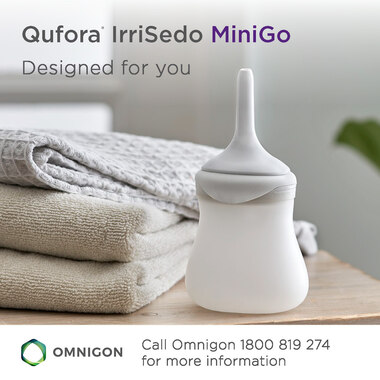The Continence Foundation of Australia has had a bustling period marked by the successful National Conference on Incontinence in May, the Great Dunny Hunt competition, World Continence Week, and the launch of our new animated video series, ‘Wee Stories’.
Health Promotion
The Foundation has recently conducted extensive research and consultations with consumers and the health and fitness sectors through the new Pelvic Floor First Review Project. A survey of 900 consumers revealed that most people do not consider their pelvic floor health until a problem arises, highlighting the need for preventive education. In response, we are developing a new strategy and action plan to enhance our pelvic floor health information and resources to better serve the community.
We have also updated our community resources on bladder and bowel control and incontinence, including six chronic condition fact sheets and the launch of our new animated video series, ‘Wee Stories’. These videos, co-designed with consumers, aim to help individuals recognise symptoms of urinary incontinence and find appropriate help without relying on written or spoken language. You can watch them here.
The Foundation continues to work in partnership with consumers (people with lived experience of incontinence or their carers) to help us design and deliver these projects and programs to meet their needs. Learn more.
Education
With the upgrade of our Learning Management System, Continence e-Learning, the Foundation now has several learning pathways available to meet the needs of all health professionals. This includes targeted learning for physiotherapists, allied health professionals, GPs, nurses and more. To register and explore our professional development offerings, click here.
We are also excited to announce the purchase of the Ramsay Health Nurse Continence Specialist Curriculum, which is the first step towards providing registered nurses with specialist training to become Nurse Continence Specialists. In consultation with existing Nurse Continence Specialists, the Foundation will design a delivery structure that meets the needs of an in-demand workforce via an interactive e-learning program. More updates will be available soon, as we progress what will become the Foundation’s flagship program.
The Great Dunny Hunt
The 2024 Great Dunny Hunt competition ran from 29 March to 16 June 2024, calling on the general public to submit their feedback about the National Public Toilet Map (NPTM) for their chance to win a monetary prize. Entrants were asked questions about how frequently they used the map, reasons for using the map and how the map could be improved.
This year’s hunt attracted over 2495 entries – a threefold increase on entries in 2023.
Over 1435 toilets were updated, and 207 new toilets were added, which is a fantastic result for the campaign and for individuals experiencing incontinence.
The feedback survey revealed the top nominated reason for using the NPTM was ‘When travelling, I need to know the nearest public toilets are’ (43.15% of responses). This was followed by ‘I need to find toilets quickly due to incontinence’ (17.91%) with many citing conditions such as IBS, Crohn’s disease, and coeliac disease as the reason they need to find a toilet quickly. Almost 99% indicated that they would recommend the NPTM to their family and friends.
The NPTM currently shows the location of more than 23,000 toilet facilities across Australia. The campaign continues to attract great interest and plays a critical role in raising awareness of incontinence within the community. Please visit www.toiletmap.gov.au for more information.
World Continence Week
This World Continence Week (17–23 June 2024), the Foundation encouraged Australians to have open and honest conversations about incontinence with friends, family and health professionals via the theme, ‘Let’s talk!’
This theme aligned with the findings from our 2023 consumer survey, which revealed that 46% of respondents with current or past incontinence had not discussed it with their friends or family, an increase from the previous year. Over 39% of those respondents cited embarrassment as the reason. To support World Continence Week and foster conversations, the Foundation launched a national awareness campaign featuring PR efforts on radio, and social media advertising, as well as promotions in GP clinics. This resulted in extensive coverage, including this article in The Age.
The Foundation has a number of campaign resources available for download and sharing, which can be accessed here.
32nd National Conference on Incontinence
The 32nd National Conference on Incontinence was held on 22–25 May 2024 at the Brisbane Convention & Exhibition Centre. The conference welcomed over 510 delegates from Australia and across the globe, 54 exhibitors and 59 speakers over four inspiring days. Delegates had the opportunity to hear from international and local experts about the latest in incontinence research and practice, presented in a broad range of sessions and workshops.
The Foundation awarded scholarships to 14 health professionals from rural and remote areas across Australia. This enabled seven nurses and seven physiotherapists to attend the conference. The State and Territory Advisory Committee’s awarded nine scholarships with six of these to health professionals working in rural or remote areas.
The 33rd National Conference on Incontinence will be held in Hobart, Tasmania, from 7–10 May, 2025. Learn more here.
National Consumer Survey
Each year, the Continence Foundation of Australia conducts a National Consumer Survey which offers insights into the community’s perceptions and experiences of incontinence, examination of quality of life matters and the well-being of those affected and their carers. Approximately 2000 people participated in this year’s survey, representing a broad cross-section of the Australian population by age, gender, and geography. We included additional questions about the type of incontinence (bladder, bowel, or both) and the number of times a woman has given birth, including multiple births. This year marks five consecutive years of conducting national consumer surveys, allowing us to use the cumulative five-year data for trend analysis.
Author(s)
Gian Sberna
CEO, Continence Foundation of Australia




